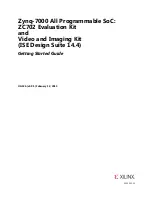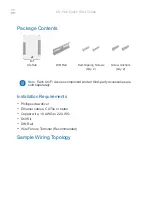
User Guide
43
Outputs
6.3. Solid State Relays
The solid state relays are used for switching currents in either direction as an
on/off signal. There are two contacts associated with each of this type of output,
which act like the two contacts of a normally open mechanical relay.
Warning!
This circuit is not electrically isolated like a mechanical relay.
For proper operation the voltage levels being switched must be between
ground and the same voltage that is applied to the VBATT_LOGIC
power pin.
The CM2115 has 2 solid state relays:
OUTPUT14_SSR_A/OUTPUT14_SSR_B and
OUTPUT15_SSR_A/OUTPUT15_SSR_B
When solid state relays are used as an on/off signal, the output provides a low
impedance path between the "A" and "B" terminals in the on state (the application
software is responsible for switching solid state relays on and off).
6.3.1. Solid State Relay Capabilities
These outputs support 1.0 A maximum continuous current between their
terminals.
The following table provides specifications for the CM2115's solid state relay:
Solid State Relay Specifications
Item
MIN
NOM
MAX
UNIT
Switchable voltage range
0
-
V
LOGIC
V
Output current
0
-
1
A
Output on state resistance
-
164
-
m
Ω
Overvoltage -
-
V
LOGIC
V
PWM frequency
-
-
0
Hz
Inductive pulse protection
-
-
628
V (peak)
Short Circuit Protection
-
4
-
A
Short Circuit Trip time
-
-
1
ms
Leakage current when off
-
-
±160
uA
6.3.1.1. Fixed Output Protection
The outputs have the following fixed protection mechanisms:
Hardware overcurrent protection – The output will be disabled when a
potentially damaging overcurrent situation is detected. The tripping threshold
of the circuit is a function of both current and time. The figure shows the















































